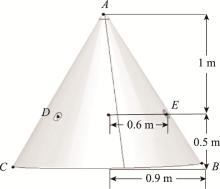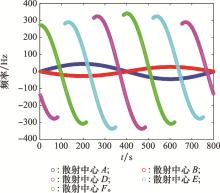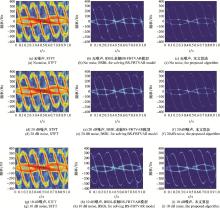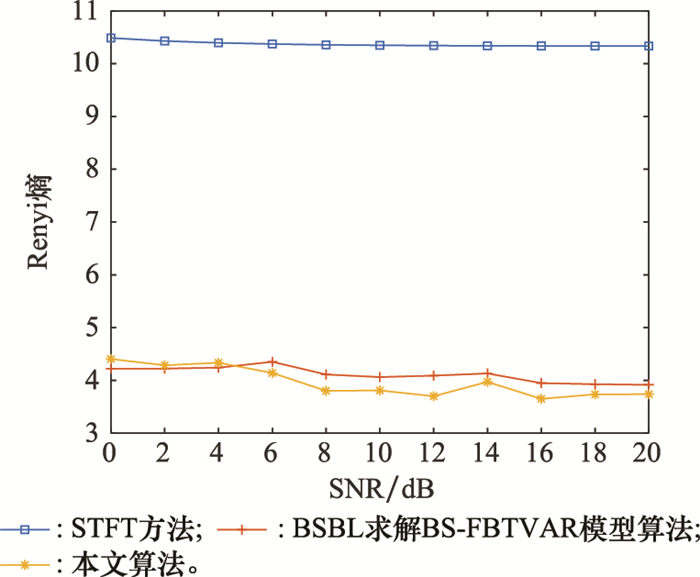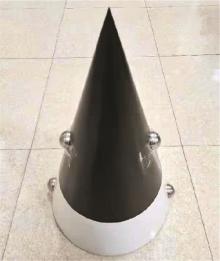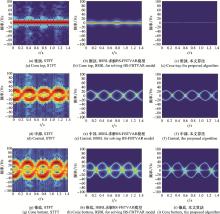| 1 |
符婷. 基于微多普勒特征的目标分类方法研究[D]. 西安电子科技大学, 2011.
|
|
FU T. Research on classification of target based on micro-Doppler[D]. Xi'an: Xidian University, 2011.
|
| 2 |
SEIFERT A K , AMIN M G , ZOUBIR A M . Toward unobtrusive in-home Gait analysis based on radar micro-Doppler signa tures[J]. IEEE Trans.on Biomedical Engineering, 2019, 66 (9): 2629- 2640.
doi: 10.1109/TBME.2019.2893528
|
| 3 |
CHEN V C . The micro-Doppler effect in radar[M]. Boston: Artech House, 2011.
|
| 4 |
赵小纳. 微动目标特征提取时频分析方法研究[D]. 新乡: 河南师范大学, 2019.
|
|
ZHAO X N. Research on time-frequency analysis method for fretting target feature extraction[D]. Xinxiang: Henan Normal University, 2019.
|
| 5 |
SHOBHA S R , YANG L , ADRIAN L , et al. Doppler-based detection and tracking of humans in indoor environments[J]. Journal of the Franklin Institute, 2008, 345 (6): 679- 699.
doi: 10.1016/j.jfranklin.2008.04.001
|
| 6 |
LIU Y X, CHEN H Y, LI X, et al. Radar micromotion target resolution[C]//Proc. of the CIE International Conference on Radar, 161-164.
|
| 7 |
DING Y P , SUN Y H , HUANG G W , et al. Human target localization using Doppler through-wall radar based on micro-Doppler frequency estimation[J]. IEEE Sensors Journal, 2020, 20 (15): 8778- 8788.
doi: 10.1109/JSEN.2020.2983104
|
| 8 |
HE Y , LI X Y , LI R L , et al. A Deep-learning method for radar micro-Doppler spectrogram restoration[J]. IEEE Sensors Journal, 2020, 20 (17): 5007.
doi: 10.3390/s20175007
|
| 9 |
洪灵. 基于稀疏重构的空间目标感知方法研究[D]. 西安: 西安电子科技大学, 2015.
|
|
HONG L. Sparsity-aware sensing for space targets[D]. Xi'an: Xidian University, 2015.
|
| 10 |
FRANZ H , FRANCOIS A . Time-frequency analysis: concepts and methods[M]. New Jersey: John Wiley & Sons, 2008.
|
| 11 |
CHEN V C . Doppler signatures of radar backscattering from objects with micro motions[J]. IET Signal Process, 2008, 2 (3): 291- 300.
doi: 10.1049/iet-spr:20070137
|
| 12 |
AHMAD A A , AJIYA M , YUNUSA Z , et al. Classification of airborne radar signals based on time-frequency features using Wigner-Ville distribution[J]. Journal of Electrical and Electronics Engineering, 2020, 13 (2): 11- 16.
|
| 13 |
CHEN X L , GUAN J , BAO Z H , et al. Detection and extraction of target with micromotion in spiky sea clutter via short-time fractional Fourier transform[J]. IEEE Trans.on Geoscience and Remote Sensing, 2014, 52 (2): 1002- 1018.
doi: 10.1109/TGRS.2013.2246574
|
| 14 |
王赐. 跳频信号压缩采样与重构技术研究[D]. 西安: 西安电子科技大学, 2020.
|
|
WANG C. Compressive sampling and reconstruction of frequency-hopping signals[D]. Xi'an: Xidian University, 2020.
|
| 15 |
ZHANG Z , RAO B D . Extension of SBL algorithms for the reco-very of block sparse signals with intra-block correlation[J]. IEEE Trans.on Signal Processing, 2013, 61 (8): 2009- 2015.
doi: 10.1109/TSP.2013.2241055
|
| 16 |
HONG L , DAI F Z , WANG X . Micro-Doppler analysis of ri-gid-body targets via block-sparse forward-backward time-vary-ing autoregressive model[J]. IEEE Trans.on Geoscience and Remote Sensing, 2016, 13 (9): 1349- 1353.
doi: 10.1109/LGRS.2016.2585583
|
| 17 |
WANG L , ZHAO L F , RAHARDJA S . Alternative to extended block sparse Bayesian learning and its relation to pattern-coupled sparse Bayesian learning[J]. IEEE Trans.on Signal Processing, 2018, 66 (10): 2759- 2771.
doi: 10.1109/TSP.2018.2816574
|
| 18 |
FANG J , SHEN Y N , LI H , et al. Pattern-coupled sparse bayesian learning for recovery of block-sparse signals[J]. IEEE Trans.on Signal Processing, 2015, 63, 360- 372.
doi: 10.1109/TSP.2014.2375133
|
| 19 |
XU X G , FENG C Q , HE S S . A method for the micro-Motion signal separation and micro-Doppler extraction for the space prece-ssion target[J]. IEEE Access, 2020, 8, 130392- 130404.
doi: 10.1109/ACCESS.2020.3008480
|
| 20 |
KAZYS K , RIMANTAS P . A forward-backward approach for instantaneous frequency estimation of frequency modulated signals in noisy environment[J]. Informatica, 2012, 23 (1): 65- 76.
doi: 10.15388/Informatica.2012.349
|
| 21 |
BOYER C , BIGOT J , WEISS P . Compressed sensing with structured sparsity and structured acquisition[J]. Applied and Computational Harmonic Analysis, 2019, 46 (2): 312- 350.
doi: 10.1016/j.acha.2017.05.005
|
| 22 |
GRENIER Y . Time-dependent ARMA modeling of nonsta- tionary signals[J]. IEEE Trans.on Acoustics Speech and Signal Processing, 1983, ASSP-31 (4): 899- 911.
|
| 23 |
BERTSEKAS D . Nonlinear programming[M]. Belmont: Athena Scientific, 1999.
|
| 24 |
ZHANG T , GUO J C , LAI R . Gridless sparse recovery for non-sidelooking space-time adaptive processing based on atomic norm minimization[J]. Journal of Electronics and Information Technology, 2021, 43 (5): 1235- 1242.
|
| 25 |
MICHAEL J . Time-frequency autoregressive moving-average modeling of nonstationary processes[M]. Vienna: TU Wien Academic Press, 2006.
|
| 26 |
WIPF D P , RAO B D . Sparse Bayesian learning for basis selection[J]. IEEE Trans.on Signal Processing, 2004, 52, 2153- 2164.
doi: 10.1109/TSP.2004.831016
|
| 27 |
YANG Z , XIE L H , ZHANG C S . Off-grid direction of arrival estimation using sparse Bayesian inference[J]. IEEE Trans.on Signal Processing, 2013, 61 (1): 38- 43.
doi: 10.1109/TSP.2012.2222378
|
| 28 |
LIU Z M , HUANG Z T , ZHOU Y Y . An efficient maximum likelihood method for direction-of-arrival estimation via sparse Bayesian learning[J]. IEEE Trans.on Wireless Communications, 2012, 11 (10): 1- 11.
doi: 10.1109/TWC.2012.090312.111912
|
| 29 |
JACHAN M, MATZ G, HLAWATSCH F. TFARMA mo-dels: order estimation and stabilization[C]//Proc. of the IEEE International Conference on Acoustics Speech and Signal Processing, 2005, 4: 301-304.
|
| 30 |
WANG C, ZHANG G Z. Target image extraction method in moving process based on Renyi entropy[C]//Proc. of the International Conference on Robots & Intelligent System, 2020: 120-123.
|
| 31 |
邵长宇. 基于HRRP序列的空间锥体目标微动参数估计方法研究[D]. 西安: 西安电子科技大学, 2016.
|
|
SHAO C Y. Research on micro-motion parameters estimation of space cone-shaped targets based on HRRP sequence[D]. Xi'an: Xidian University, 2016.
|
